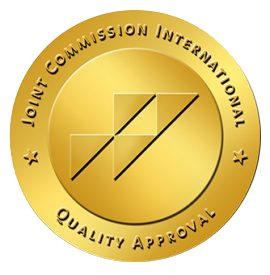Surveillance of antimicrobial resistance in Lebanese hospitals: retrospective nationwide compiled data
Kamal Chamoun, Maya Farah, Georges Araj, Ziad Daoud, Rima Moghnieh, Pascale Salameh, Danielle Saade, Jacques Mokhbat, Emma Abboud, Monzer Hamze, Edmond Abboud, Tamima Jisr, Antoine Haddad, Rita Feghali, Nadim Azar, Mohammad El-Zaatari, Marwan Chedid, Christian Haddad, Mireille Zouain, Dib Nehme, Angelique Barakat, Rola Husni
Antimicrobial resistance is closely linked to antimicrobial use and is a growing concern worldwide. Antimicrobial resistance increases healthcare costs substantially in many countries, including Lebanon. National data from Lebanon have, in the most part, been limited to a few academic hospitals. The Lebanese Society of Infectious Diseases conducted a retrospective study to better describe the antimicrobial susceptibility patterns of bacterial isolates in Lebanon. Data were based on records retrieved from the bacteriology laboratories of 16 different Lebanese hospitals between January 2011 and December 2013. The susceptibility results of a total 20684 Gram-positive and 55594 Gram-negative bacteria were analyzed. The prevalence rate of methicillin-resistant Staphylococcus aureus was 27.6% and of vancomycin-resistant Enterococcus spp was 1%. Streptococcus pneumoniae had susceptibilities of 46% to oxacillin, 63% to erythromycin, and 98% to levofloxacin. Streptococcus pyogenes had susceptibilities of 94% to erythromycin and 95% to clindamycin. The mean ampicillin susceptibility of Haemophilus influenzae, Salmonella spp, and Shigella spp isolates was 79%, 81.3%, and 62.2%, respectively. The extended-spectrum beta-lactamase production rate for Escherichia coli was 32.3% and for Klebsiella spp was 29.2%. Acinetobacter spp showed high resistance to most antimicrobials, with low resistance to colistin (17.1%). Pseudomonas spp susceptibilities to piperacillin-tazobactam and imipenem were lower than 80% (79.7% and 72.8%, respectively). This study provides population-specific data that are valuable in guiding antimicrobial use in Lebanon and neighbouring countries and will help in the establishment of a surveillance system for antimicrobial resistance following the implementation of a nationwide standardization of laboratory methods and data entry.
Read More
Leave a reply Abstract
Antimicrobial resistance is closely linked to antimicrobial use and is a growing concern worldwide. Antimicrobial resistance increases healthcare costs substantially in many countries, including Lebanon. National data from Lebanon have, in the most part, been limited to a few academic hospitals. The Lebanese Society of Infectious Diseases conducted a retrospective study to better describe the antimicrobial susceptibility patterns of bacterial isolates in Lebanon. Data were based on records retrieved from the bacteriology laboratories of 16 different Lebanese hospitals between January 2011 and December 2013. The susceptibility results of a total 20684 Gram-positive and 55594 Gram-negative bacteria were analyzed. The prevalence rate of methicillin-resistant Staphylococcus aureus was 27.6% and of vancomycin-resistant Enterococcus spp was 1%. Streptococcus pneumoniae had susceptibilities of 46% to oxacillin, 63% to erythromycin, and 98% to levofloxacin. Streptococcus pyogenes had susceptibilities of 94% to erythromycin and 95% to clindamycin. The mean ampicillin susceptibility of Haemophilus influenzae, Salmonella spp, and Shigella spp isolates was 79%, 81.3%, and 62.2%, respectively. The extended-spectrum beta-lactamase production rate for Escherichia coli was 32.3% and for Klebsiella spp was 29.2%. Acinetobacter spp showed high resistance to most antimicrobials, with low resistance to colistin (17.1%). Pseudomonas spp susceptibilities to piperacillin-tazobactam and imipenem were lower than 80% (79.7% and 72.8%, respectively). This study provides population-specific data that are valuable in guiding antimicrobial use in Lebanon and neighbouring countries and will help in the establishment of a surveillance system for antimicrobial resistance following the implementation of a nationwide standardization of laboratory methods and data entry.
Read More







